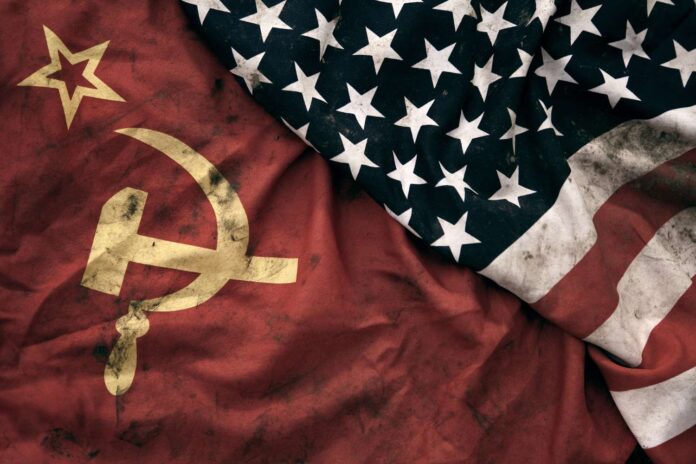Author: Deborah Welch Larson
Affiliation: University of California, Los Angeles
Organization/Publisher: Foreign Policy
Date/Place: January 15, 2021/USA
Type of Literature: Journal Article
Word Count: 2155
Link: https://foreignpolicy.com/2021/01/15/containment-russia-china-kennan-today/
Keywords: Containment Strategy, George F. Kennan, the Cold War, and the Current Great Power Rivalry
Brief:
Between 1947-1989, the United States adopted a strategy called containment, formulated by George F. Kennan and considered one of the most successful strategies adopted over the country’s history, through which Washington was able to prevent the expansion of Soviet power and influence, weaken the Soviet Union and eventually toppling it in 1991. The author wonders here whether adopting this strategy again (or some aspects of it) is logical in light of “the Second Cold War” that is taking place today between the US, China, and Russia. To answer this question, Larson divides the essay into three parts. The author first explains the nature of this strategy and its historical contexts. Then, she identifies the differences between the characteristics of competition with the Soviet Union during the Cold War era and the current/future competition with both China and Russia, explaining the difficulty of pure application of containment again. Finally, she explains how Washington can benefit from the containment policy despite these difference and difficulties. In 1946, Kennan recommended Washington take a “long-term, patient but firm and vigilant containment of Russian expansive tendencies,” which, in his view, might “mellow” Moscow and push it to a negotiated settlement. President Truman adopted this policy under the name “The Truman Doctrine”. The difficult circumstances that Europe went through after World War II helped him to embody this policy, winning over European allies by activating the containment’s two main aspects, that is, providing economic aid (the Marshall Plan) and military cover ( NATO) to prevent Europeans from shifting toward the Soviet Union, thus filling the vital void necessary for global leadership. This aid had liberal dimensions as well. Through it, Washington was able to support free peoples, liberalize the market, reduce trade barriers, and thus establish a liberal international order under its leadership. Today, with the return of the great power rivalry, the author believes that containment seems an attractive idea, but there are many differences between today and the past that complicate its embodiment, most notably: 1. The American and Chinese economies are highly interdependent, making it difficult for Washington to implement the idea of cutting trade, investment, and student exchange with China, as it did in the past with the Soviets. 2. The US will also struggle to prevent third countries from trading and investing in China. It will also be difficult for it to prevent its European allies from trading extensively with Russia in the field of natural gas, for example. 3. The military component of containment will be extremely complex as well. During the Cold War, containment succeeded because there were clear dividing lines between East and West, war and peace. Today, the dividing lines are not completely clear. In the South China Sea, for instance, American and Chinese ships frequently intermingle. In Eastern Europe, the question of whether Ukraine belongs to the West or Russia has triggered seven years of tension and bloodshed with no solution on the horizon. Both Russia and China today use hybrid wars, as well as “Salami tactics” that depend on taking small, gradual steps that do not raise strong opposition or go beyond the threshold of war, but lead over time to a major shift on the ground in their favor, as is happening in the South China Sea, Eastern Europe, and the Middle East. Conflicts in such areas no longer belong to the conventional war generation with which traditional military containment is suitable. In addition, the application of containment in its traditional form may lead to dangerous violent reactions from China and Russia that end in dividing the world into competing geostrategic and economic blocs of influence. Despite these difficulties, the author finally clarifies that there is a possibility of adopting some elements of containment policy to compete with the great powers today. The aim of containment was not to encourage regime change as much as it was aimed at preventing countries from falling into the enemy’s orbit; so the US today must deal with Russia and China as they are, without trying to change their regimes from inside. Washington should also capitalize on the economic aspect of containment by renewing its commitment to multilateral institutions, free trade, and liberal values to push competitors to alter their unjust and brutal economic tactics. It could also revive economic aid (similar to the Marshall Plan) to provide an alternative to China’s Belt and Road Initiative in order to spare other countries from a deep attachment to China. The goal of containment will be to avoid war with the rival great powers, while discouraging them from challenging the US until a negotiated settlement with them becomes possible. The author also calls for renaming the containment policy, given the toxic sensitivity that the term reflects in both China and Russia; “rebalancing” may be an appropriate term. Properly implementing containment in this way will yield as good results as in the past, i.e, building a network of “healthy partners capable of standing up to coercion and intimidation on their own.”
By: Djallel Khechib, CIGA Senior Research Associate




